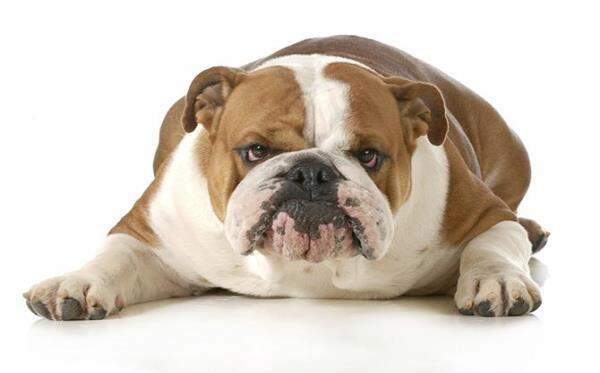How to Train a Puppy: A Week-by-Week Breakdown
- S B
- Jul 15
- 4 min read
Bringing home a puppy is exciting, but it can also feel overwhelming. There’s so much to teach, and every article seems to suggest you should’ve started yesterday. The good news? You don’t have to do everything at once. Puppies learn best with consistency, patience, and small, manageable steps.
This week-by-week guide breaks down what to focus on as your puppy grows, from house training and crate comfort to leash manners and basic commands. Whether you’re a first-time puppy parent or just need a refresher, here’s what to expect (and what to teach) as your puppy grows up.

Weeks 8–10: Settling In & Building Trust
This is your puppy’s transition period. They’ve just left their mom and littermates and need structure, comfort, and gentle exposure to their new world.
Focus on:
House Training Basics
Take your puppy out every 1–2 hours.
Use a consistent phrase like “go potty.”
Reward immediately after they go outside—praise, treats, or both.
Crate Introduction
Make the crate a positive place with toys, treats, and soft bedding.
Start with short periods (10–15 minutes) while you’re nearby.
Name Recognition
Say your puppy’s name in a happy tone and reward them when they look at you.
Gentle Handling
Touch their paws, ears, mouth, and belly regularly to prepare them for vet visits and grooming.
Socialization Begins
Introduce calm people, safe sounds (TV, vacuum, etc.), and short car rides.
Training Tip: Keep sessions short, about 5 minutes at a time, a few times a day. Puppies have short attention spans.
Weeks 10–12: Routine, Routines, Routines
By now, your puppy should be getting more comfortable in their new home and ready to start learning basic rules and commands.
Focus on:
House Training Progress
Accidents will still happen—stay patient and consistent.
Begin teaching your puppy to “ask” to go out, such as ringing a bell or sitting by the door.
Crate Training at Night
Increase crate time during naps and overnight.
Most puppies this age can sleep 4–6 hours at night before needing a potty break.
Basic Commands
Start with sit, come, and leave it.
Use positive reinforcement (treats, praise, toys).
Keep distractions low while they’re still learning.
Leash Desensitization
Let them wear the collar and leash indoors.
Practice walking around the house to build comfort.
Bite Inhibition
Redirect nipping to toys.
Use “ouch!” in a calm, firm tone when they bite too hard.
Training Tip: Now’s a great time to sign up for puppy classes if available. Social exposure is key during this window.
Weeks 12–16: Socialization & Confidence Building
This stage is a critical window for socialization. The more safe and positive experiences your puppy has now, the more confident and well-adjusted they’ll be later on.
Focus on:
Meet New People & Dogs (Safely)
Arrange playdates with vaccinated, friendly dogs.
Expose your pup to people of all ages, ethnicities, and appearances.
Desensitize to Sounds & Surfaces
Let them walk on tile, wood, grass, concrete, gravel.
Play recordings of fireworks, thunderstorms, city noise—gradually and at low volume.
Continue Basic Commands
Add “down,” “stay,” and “drop it.”
Start increasing duration and distraction gradually.
Short Leash Walks Outdoors
Keep walks short and positive.
Allow time to sniff, it’s mentally stimulating.
This is their, as some like to call it, "scrolling through TikTok" time
Training Tip: Use high-value treats (like bits of chicken or cheese) when training in new or distracting environments.
Weeks 16–20: Practicing Self-Control
Your puppy is more confident now, but they’re also testing boundaries. This is where consistency becomes especially important.
Focus on:
Impulse Control Games
Try games like “leave it,” “wait,” and “place.”
Reinforce the idea that good things come from being calm and patient.
Handling Distractions
Practice commands in new places: the backyard, a quiet park, or even your front porch.
Reinforce Loose-Leash Walking
Reward for walking next to you, not pulling.
Change direction when they get ahead. Teach them to follow your lead.
Manners Around Food and Guests
Practice polite greetings (sit instead of jumping).
Use meal times to reinforce commands like “wait” and “okay.”
Training Tip: It’s normal for puppies to push boundaries around this time. Stay consistent, reward good behavior, and avoid harsh corrections.
Weeks 20–24: Building on the Basics
At this stage, your puppy is developing stronger habits—for better or worse. Reinforce the behaviors you want and be proactive about redirecting the ones you don’t.
Focus on:
Longer “Stay” & “Come” Practice
Increase distance and distractions during training.
Use a long leash to practice reliable recall outdoors.
More Structured Walks
Add stops, direction changes, and commands like “heel” or “watch me.”
Polishing Off-Leash Skills (in Safe Spaces)
Practice recalls in fenced-in yards or with a long lead at the park.
Build Confidence with “Place” and “Settle”
Use mats or beds to teach your dog where to relax during downtime or when guests arrive.
Training Tip: Keep sessions fun and upbeat. Use play, praise, or tug as a reward, not just food.
6 Months and Beyond: Teen Phase Ahead
Around this time, many puppies enter adolescence. They may appear to “forget” things they already learned, challenge rules, or become easily distracted. This phase can be frustrating, but it’s completely normal.
Keep reinforcing the basics, maintain structure, and stay patient. What you’re doing now will shape your dog’s adult behavior.






Comments